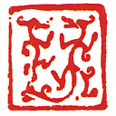Asian Art
Second Paper: Comparison
Your second paper for this course will be a comparison of two works of art, from any period of Asian history, in any medium. You should write about something very different from the painting you chose for the first paper, and at least one of the objects should be from a different culture and time period. Your thesis for both papers should not be the same.
Look carefully at both objects and analyze them in relation to each other based on what you see. The best papers will be about works of art that have something in common with each other, some element around which you can organize your paper, but will also be different enough from each other that they make a good contrast.
For guidance on how to do this, see:
- Christina Maranci, A Survival Guide for Art History Students (Pearson Prentice Hall, 2005), Chapter 4, "The Art History Exam," pp. 71–96. Download: Maranci_4.pdf. The relevant section is "Slide Comparisons," pp. 80–89, but you will find the entire chapter useful.
- Sylvan Barnet, A Short Guide to Writing about Art (Pearson Prentice Hall, 2010), Chapter 5, “Writing a Comparison” pp. 135–148. Download: Barnet_5.pdf.
The paper should be about 900-1500 words long (roughly 3-5 pages of text, not including pictures or bibliography).
Choice of Objects
Everyone should choose their objects by Monday, April 22. You can give me something in class, or just send me an email telling me what you're doing. If you're having trouble, contact me and I will help you.
- If you can, you should make a trip to the Yale University Art Gallery. You will find a good selection of objects on display there. Note that you will want to make two trips, the first to make your choice and the second after you've completed your first draft.
- If you can't do that, then you will need to pursue the assignment online. The main problem here is finding high-resolution images to work from. Most online sources do not provide useful images, but there are several that do:
First Draft
If you want to turn in a first draft, I need it by Friday, April 26. I will read all the drafts that weekend and give them back on Monday, April 29th. You'll then have a week to do your revisions.
Like the first paper, this essay should contain both a description and an analysis of each object. Start your draft by describing the objects as if your reader cannot see them. Then use the description to analyze not only the artistic choices of the makers, but also the objects' style and function in relation to each other.
Here are some elements that you may want to pay attention to (remembering that the absence of certain characteristics is sometimes important too): formal characteristics of the objects (including their form or composition; media; quality of line and/or color; texture; rendering of space, mass or volume; proportion or scale; perspective or viewpoint of the viewer); the objects' subject matter; where and when the objects were made (their provenance and date).
Develop a thesis or an argument around which to organize your writing, and put the thesis in the first paragraph.
Second Draft
Due in class Monday, May 6.
In your second draft, you should refine your thesis and resolve any problems that became apparent in the first draft.
If you are unsure about how to format your paper, see:
- Sylvan Barnet, A Short Guide to Writing About Art (Pearson Prentice Hall, 2010), Chapter 13, "Manuscript Form," pp. 299–335. Dowload: Barnet_13.pdf.
If you cite a source, use either parenthetical references or footnotes. Make sure that you follow one of the documentation styles explained in Barnet's chapter.
On plagiarism:
Plagiarism is the use of someone else’s words or ideas without giving that person credit. This means that you need to cite your sources in your writing assignments. When quoting directly from a text—say, five words or more in succession—you need to put those words in quotation marks and include a parenthetical reference or footnote citing the source. When rewriting a passage from a text in your own words, you don’t need the quotation marks but you do still need the parenthetical reference or footnote. If you don’t understand exactly what constitutes plagiarism, or how to use parenthetical references or footnotes, please ask me. I would prefer to explain what it is and how to avoid it before it happens rather than after.
NOTE: Much of the above (including the paragraph on plagiarism!) is derived from a syllabus written by Professor Lara Blanchard at Hobart and William Smith Colleges.
